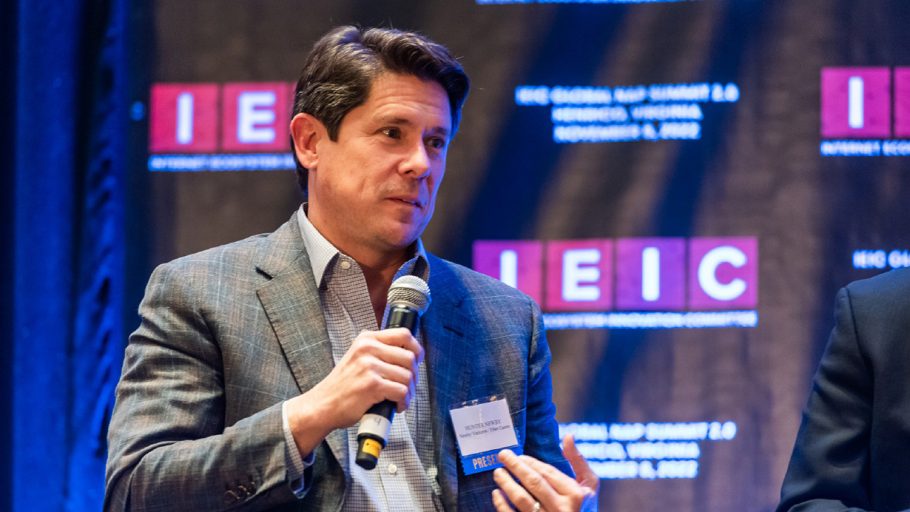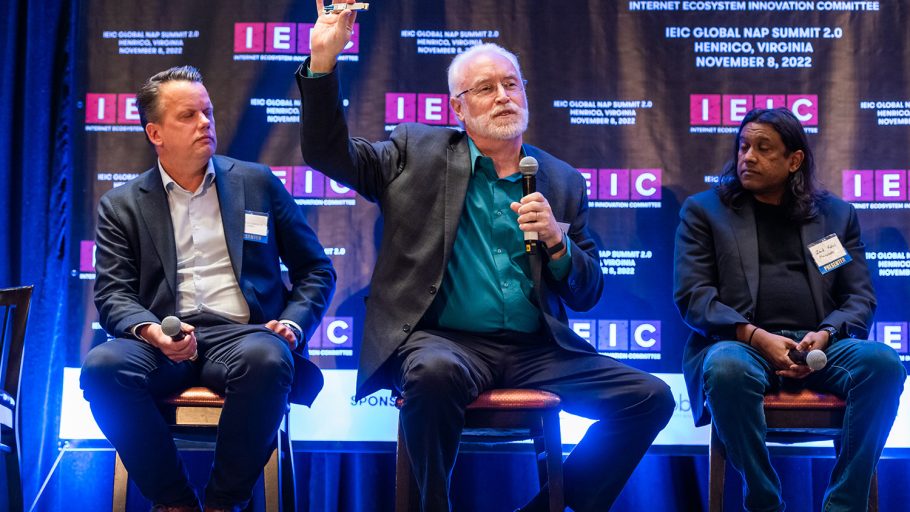Exponential Rise in Data
The exponential growth of data and the importance of robust digital infrastructure: our homes will run on IoT devices, autonomous vehicles will accelerate connectivity needs, and every company, regardless of size or industry, will run on a digital backbone. We have to make sure the resources we’re providing achieve safety, security, and reliability goals, as well as accessibility, usability, and privacy requirements, or people won’t feel or be comfortable and safe using them on a daily basis.
“Co-opetition” Fuels Digital Infrastructure Growth
In this industry, everyone is a potential partner, and “co-opetition”—cooperating with a competitor to achieve a common goal or get ahead—defines the market.
“This entire industry is made of problem solvers,” said Staffan Göjeryd, CEO of Arelion. “Finding solutions isn’t necessarily the issue; ‘what is the next problem’ is the main challenge.” All players in our industry need to work together in order to anticipate and address these challenges and advance digital infrastructure goals as a whole.
Market Moves Fast and Often on Handshakes
The digital infrastructure marketplace appears to operate as an entrepreneurial network. One speaker speculated that 80 percent of the traffic on terrestrial networks does not have a formal contract between parties. Players travel extensively and often meet just to make things “happen.”
Carrier-Neutral Matters
One of the keys to Marseille’s rise as an international digital infrastructure connection hub was that the city became the world’s first neutral subsea landing point.
Speaking on the need for more neutral interconnection hubs, CEO of Newby Ventures, Hunter Newby, explained: “It’s about bringing the essence of neutral interconnection out to where it’s needed. Neutral interconnection real estate solves the broadband problem, because if you have a neutral landlord, you have a place where the content providers can put their equipment, where the local metros and fiber-to-the-home can be, and where the long-haul can meet.”
Real Intentionality Creates Interconnection Hubs
Proactive, intentional market development is at work in the creation and growth of major international digital infrastructure connection hubs. Hong Kong’s data centers and terrestrial network joined together to buy land in order to create a carrier- and cable-neutral subsea landing point. Once the cable owners and operators came ashore, it was an open market.
As the world’s digital infrastructure continues to expand, many embryo sites are emerging, especially as political affairs and coastal protection can affect landing site opportunities (as is happening in the US). For example, according to Raymond Tong, CEO & Executive Director of SUNeVision: “Geopolitical tension cannot stop data traffic—data will always find a way to keep growing. Regional cable is able to take advantage of that situation, so we’ve seen a number of Southeast Asia cables trying to accelerate plans to land their systems in Hong Kong, and we’re welcoming that.”
This intentionality implies to data, too. Michael Karafotis, Managing Director of Data Quality and Control at Bank of America, stated: “The information part of ‘information technology’ is taking over. Now we’re worried about data debt because our technology collects a lot of information. And if we’re not being very intentional about what that data is, how it’s used, and how we’re managing it, it can cause problems.”
Today’s Subsea Cable Network is Sub-Optimal
There’s an axiom in the digital infrastructure industry that the layer below will always be there. In other words, you can count on a growing robust network based on what’s already there. The one exception, however, are subsea cables. Many subsea cables are legacy systems that are approaching the end of their useful 25-year lifespan and like all under-water infrastructure they are vulnerable to cable breaks and outages due to external aggression.
Steve Alexander, CTO and Co-Founder of Ciena, weighed in on infrastructure reliability and accessibility. “We need to be all about capacity, driving cost down, and making resilient infrastructure simpler and easier to deploy—that’s a big part of making infrastructure inclusive.” “Previously many of the subsea cables were built to connect people, or to connect networks. One of the changes that we’ve seen over the last several years is that hyperscalers want to connect data centers. The amount of traffic they have going through those same cables is significantly larger than what we had before, so we also have to reconsider both the capabilities of these cables and the hubs where they are connecting,” said Erick Contag, Ex-Chairman of GlobeNet.








